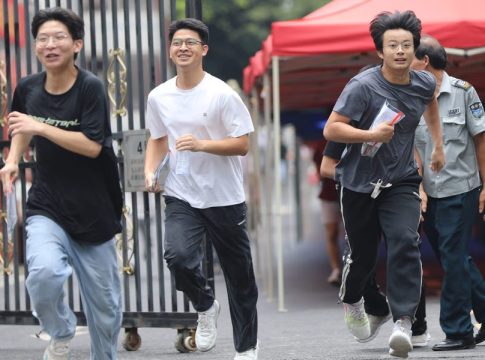AI Tools Silenced: China’s Gaokao Exam Confronts Tech Trends
The High Stakes of the Gaokao
In China, education is a powerful ladder for social mobility, and every year, millions of students line up to take the gaokao, the national college entrance exam. Over 13.4 million high school seniors sat for this notoriously challenging test, which runs for several days. Unlike the diverse criteria often seen in U.S. college admissions—from essays to extracurriculars—the gaokao is the deciding factor for many Chinese students’ futures, making the pressure astronomically high, particularly for those from less affluent backgrounds.
A Takedown of AI Support
As students prepared for this year’s exam, major tech firms such as Tencent, ByteDance, and Moonshot AI took a decisive step: they disabled AI functionalities in their applications during the exam period. Features like real-time question answering and photo recognition, typically the hallmarks of these platforms, were turned off to combat potential cheating, emphasizing the serious approach taken by authorities to ensure exam integrity.
Last month, the Ministry of Education issued warnings against the use of AI-generated answers, further punctuating the importance of original thought and effort in academic assessments. This dual message of promoting AI education while simultaneously restricting its use in critical contexts is seen as a tightrope walk for regulators.
Tech Giants Respond
Screenshots shared on platforms like Rednote illustrated the swift actions of these AI tools. User attempts to engage features linked to exam questions were met with prompts reminding them of the examination’s fairness. For instance, popular chatbots, including Tencent’s YuanBao and ByteDance’s Doubao, displayed messages such as:
- "This function is not available during the college entrance examination phase. Wishing all candidates success."
This rigorous enforcement reflects a commitment to maintaining a level playing field amidst a growing expectation for tech to aid—and obstruct—traditional educational pathways.
AI’s Educational Future
Despite these restrictions, China is heavily investing in AI education. Starting this academic year, schools in Beijing will require students to complete at least eight hours of AI instruction annually. This innovative push aims to cultivate a tech-savvy generation ready for a rapidly evolving job market—yet the message remains clear: AI is intended for learning, not for shortcuts.
Conclusion: Navigating the Tension
As we move forward, this juxtaposition of fostering AI literacy while limiting its application in critical exams presents a significant cultural and educational dialogue. Chinese regulators are not just shaping curriculum; they are defining the role of technology in learning and assessment. The outcome of this balancing act may very well determine how future generations of students will engage with AI—not just as tools of convenience but as instruments of integrity in their academic journeys.
By pulling the plug on AI during the gaokao, China has sent a clear signal: the journey to academic achievement must remain grounded in personal effort, a lesson that is likely to resonate far beyond the exam hall.

Writes about personal finance, side hustles, gadgets, and tech innovation.
Bio: Priya specializes in making complex financial and tech topics easy to digest, with experience in fintech and consumer reviews.

